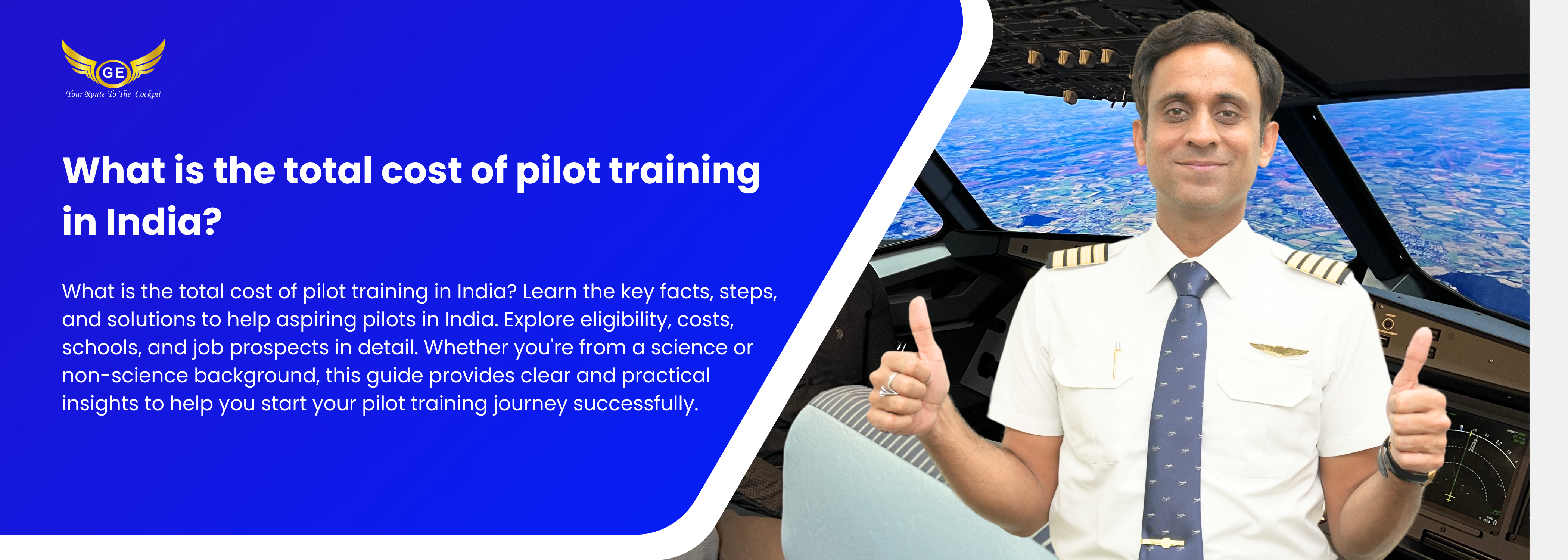CPL vs PPL: Pilot Training in India
CPL vs PPL: Your Complete Guide to Pilot Training in India
Aspiring pilots in India often come across two key terms: CPL and PPL. These stand for Commercial Pilot License and Private Pilot License, respectively. Choosing between them – or understanding how they complement each other – is the first step in your aviation journey. In this comprehensive guide, we’ll explain what CPL and PPL are, outline the step-by-step pilot training in India, discuss DGCA ground classes, and compare the licenses in terms of training, cost, and career scope. We’ll also highlight why Golden Epaulettes Aviation stands out as a top institute for CPL classes and pilot training. By the end, you’ll know exactly how to chart your path from beginner to licensed pilot, and beyond.
Introduction to CPL and PPL
Private Pilot License (PPL): A PPL is the most basic pilot certification, allowing you to fly an aircraft for personal or recreational purposes. With a PPL, you can act as pilot-in-command of an aircraft and even carry passengers, but you cannot be paid for your flying servicesgoldenepaulettes.com. In essence, it’s meant for hobby flying, personal travel, or as the first milestone towards advanced pilot training. The minimum age for a PPL in India is 17 years, and it requires meeting certain medical and educational standards (at least Class 10th pass, though 10+2 with science is recommended).
Commercial Pilot License (CPL): A CPL is a professional pilot license that allows you to earn a living from flying. It permits you to act as pilot-in-command of a commercial aircraft for compensation or hiregoldenepaulettes.com, which is essential for careers like airline pilot, cargo pilot, or charter pilot. To pursue a CPL in India, you must be at least 17 years old to start training (18 by the time of license issuance) and have completed 10+2 education in science with Physics and Mathematicsgoldenepaulettes.com. You’ll also need a higher medical fitness class (Class 1 medical certificate) before issuance of the CPL.
Key Differences and Career Relevance: The fundamental difference between PPL and CPL is the allowed scope of flying and career opportunities. A PPL is ideal if your goal is to fly for pleasure or personal use – for example, owning a small plane or flying as a hobby on weekends. It’s also the first step in training; many pilots get a PPL before moving on to a CPL. However, a PPL is not sufficient to join an airline or work as a pilotgoldenepaulettes.com. On the other hand, a CPL is geared towards those who wish to make flying a full-time career. With a CPL (and subsequent advanced training), you can become a commercial pilot, earning a salary and flying large aircraft. In short:
PPL – Lower training hours, lower cost, meant for private flying; cannot be used for paid work.
CPL – Extensive training, higher cost, opens up professional pilot jobs; mandatory for airline pilots and other commercial roles.
Both licenses are issued by the DGCA (Directorate General of Civil Aviation) in India and follow the standards of the International Civil Aviation Organization (ICAO). Often, an aspiring commercial pilot will obtain a PPL first and then continue training to meet CPL requirements. Next, let’s look at how one actually goes about training for these licenses in India.
Step-by-Step Training Process in India for PPL and CPL
Becoming a pilot involves a series of well-defined steps. In India, the DGCA regulates this process. Below is a step-by-step breakdown of how you go from zero experience to a fully licensed Private Pilot and then a Commercial Pilot:
Meet Eligibility Requirements: Ensure you satisfy the basic criteria. For a PPL, you should be at least 17 years old. For a CPL, you’ll need to be 18 by license completion and have finished Class 12 with Physics and Math (or equivalent). You must also be medically fit – initially obtaining a Class 2 medical certificate, and eventually a Class 1 medical for CPL. Medical fitness as per DGCA standards is mandatorygoldenepaulettes.com.
Obtain a DGCA Computer Number & Medical Clearance: Before starting pilot exams, register with DGCA to get a Computer Number (a unique ID for all your exam records) and undergo the required medical examinations. Clearing a Class 2 medical test will grant you a medical clearance to begin flying training; you should upgrade to Class 1 medical during your CPL training period. These steps ensure you’re fit to fly and officially recognized as a trainee pilot.
Enroll in a Flying School and Get a Student Pilot License (SPL): Join a flying training organization (FTO) or flying club in India. On enrollment, you’ll undergo an initial ground schooling and a written/oral exam on aviation basics for the issuance of an SPL. The Student Pilot License (SPL) is like a learner’s permit – it allows you to take flight training under an instructor. This is your first formal step into aviation. (In summary: obtain an SPL, then complete PPL training, then CPLgoldenepaulettes.com.)
Complete Private Pilot Training (PPL): With your SPL, you begin flight training for the PPL. This involves dual flights with an instructor and solo flights, gradually building your skills. You’ll also attend ground classes for PPL-level theory subjects (Air Regulation, Air Navigation, Meteorology, and Aircraft Technical knowledge basics). DGCA mandates a minimum of 40 hours of flight time, including at least 20 hours of solo flight timegoldenepaulettes.com for a PPL. These hours must include specific milestones like cross-country (navigation) flying. In training, you will learn takeoff and landing techniques, flight maneuvers, basic navigation, and emergency handling in a single-engine propeller aircraft (commonly trainers like Cessna 152/172).
Pass PPL Exams and Checkride: Earning the PPL requires passing the DGCA written examinations (typically three subjects for PPL) and a practical flight test. The flight test (checkride) is conducted by a DGCA examiner who will assess your flying skills and decision-making. You’ll be tested on tasks such as navigation exercises, emergency procedures, and general aircraft handling. You also need to clear an oral exam on regulations and aircraft knowledge. Once you clear the written tests and the flying test, you are granted the Private Pilot License. Congratulations – you can now legally pilot an aircraft privately!
Build Flight Experience & Advance to CPL Training: After PPL, if your goal is a Commercial Pilot License, training continues seamlessly. Now the focus is on meeting the higher experience requirements and advanced skills for a CPL. A minimum of 200 total flight hours is required for a CPL, as per DGCA rules. This total includes the hours already flown during PPL. So, you will accumulate roughly 150+ additional hours post-PPL. During this phase, you’ll do longer solo cross-country flights (to different airfields), learn precision in navigation, and gain night flying experience. You will also undertake a chunk of instrument flying training (flying solely by reference to instruments, which is crucial for flying in clouds or low visibility). Typically, a portion of these instrument hours can be done in a simulator. Many trainees also opt to train on a multi-engine aircraft for 10-15 hours, as having a Multi-Engine Rating is advantageous for airline jobs. All this builds the proficiency needed to fly more complex aircraft.
Attend DGCA Ground Classes for CPL Subjects: Alongside flight training, you will enroll in DGCA ground classes covering the extensive theory syllabus for CPL. The CPL knowledge exams in India are more numerous and detailed than for PPL. Key subjects include Air Regulations, Aviation Meteorology, Air Navigation, Technical (General & Specific), and Radio Telephonygoldenepaulettes.com. These classes are crucial – they prepare you for the mandatory DGCA written exams for CPL. Most students join specialized courses (like DGCA CPL ground classes offered by Golden Epaulettes Aviation and others) to get coaching in these subjects. These classes reinforce concepts like flight rules, weather patterns, aircraft engines and systems, navigation techniques, and communication procedures. The importance of ground training cannot be overstated: a strong theoretical foundation makes you a safer pilot and helps you clear the exams on the first attempt. Institutes such as Golden Epaulettes ensure all essential topics for the DGCA exams are covered, so students are well-prepared for the challenges aheadgoldenepaulettes.com.
Clear CPL Written Exams and Flight Tests: The CPL requires passing multiple DGCA-conducted written exams (one for each subject mentioned above) as well as a Radio Telephony (RTR) exam which is conducted by the WPC wing of the Ministry of Communication. The RTR exam tests your proficiency in aviation communication and phraseology and is essential for getting your radio operator’s license. After you’ve logged the required flight hours and feel proficient, you’ll go through a rigorous flight test for CPL. A DGCA examiner will evaluate you on advanced maneuvers, navigation, instrument flying, and emergencies (essentially a deeper assessment than the PPL checkride). You must also meet the required standards in night and instrument flying as per DGCA guidelines during this test.
Obtain Your Commercial Pilot License: Once you have passed all CPL written papers, the RTR exam, completed the required flight experience (200 hours), and passed the CPL flight test, you can apply to DGCA for issuance of your Commercial Pilot License. At this stage, assuming you are now at least 18 and hold a current Class 1 medical, you will be issued a CPL. You’re now authorized to fly as a commercial pilot in India! Most pilots at this juncture will have a CPL with a Single-Engine Land rating and optionally a Multi-Engine endorsement if they trained on a multi-engine aircraft. The journey can take anywhere from 12 to 24 months, depending on factors like weather, scheduling, and exam timelines – but many dedicated students complete their CPL training in about 18 months or less.
Throughout this process, it’s common to seek guidance from training academies or mentors. Golden Epaulettes Aviation, for example, provides end-to-end mentorship – from helping you get your computer number and medicals, to offering ground classes, and even advising on hour-building strategies. In fact, their program breaks down this journey into clear stages, making it easier for students to navigate. The path may seem long, but with passion and the right training, you’ll find yourself moving from one milestone to the next fairly quickly.
DGCA Ground Classes and Their Importance
The term “DGCA ground classes” refers to the theoretical training courses that prepare pilot trainees for the DGCA’s written examinations. These classes cover the academic knowledge a pilot must master – think of it as the classroom portion of pilot training, complementing the practical flying. For both PPL and CPL, attending ground school is essential because flying an aircraft isn’t just about controlling the machine; it’s also about understanding aerodynamics, weather, navigation, and regulations in depth.
What do ground classes cover? In India, the DGCA prescribes specific subjects for each license level. For a CPL (and to a large extent overlapping with PPL topics), you will study:
Air Regulations: The rules governing aviation – from airspace classifications to pilot licensing rules and flight procedures.
Aviation Meteorology: Weather theory and its impact on flight. You’ll learn to interpret weather reports and forecasts, understand monsoons, winds, cloud formations, and how to make safe decisions based on weather.
Air Navigation: How to navigate aircraft using maps, instruments, and radio aids. This includes understanding coordinates, planning routes, and using navigation systems safely.
Technical General & Technical Specific: The principles of aircraft engines, systems, and structures. “General” covers broad concepts applicable to all aircraft (like aerodynamics, basic engine mechanics), while “Specific” deals with the particular aircraft type you train on (for example, detailed systems of a Cessna trainer). Pilots must have a solid grasp of aircraft systems to ensure safe operation and handle malfunctionsgoldenepaulettes.com.
Radio Telephony (RTR/A): Communication procedures with Air Traffic Control, including standard phraseology and emergency communication. Clear communication is vital to flight safetygoldenepaulettes.com.
For the PPL level, the number of subjects/exams is fewer (usually excluding Technical Specific and RTR), but the basics are the same. Ground classes systematically teach you these topics and more, often with the help of experienced instructors, textbooks, and mock tests.
Why are these classes important? Firstly, passing the DGCA written exams is mandatory to get your license. Without clearing these papers, you cannot be issued a PPL or CPL, no matter how good your flying is. The exams can be challenging, with questions designed to test not just rote facts but your understanding of concepts and ability to apply them. Good ground training institutes ensure you master the theory and are well-equipped to tackle the exams confidentlygoldenepaulettes.com.
Secondly, this knowledge directly translates to real-world airmanship. For instance, understanding meteorology helps you avoid dangerous weather; knowing air regulations keeps you from violating airspace or rules; and strong technical knowledge means you can troubleshoot issues in-flight. Pilots with strong ground knowledge make better decisions in the sky.
India has several ground school options – some are part of flying clubs, others are independent academies focusing solely on DGCA exam prep. Golden Epaulettes Aviation is a leader in this space, known for its dedicated DGCA ground classes for CPL and ATPL subjects. They offer both classroom and online modes, making it convenient for students across India. With experienced faculty and a proven curriculum, they cover every topic in the syllabus, supplementing theory with practical examples from real flying scenarios. This approach makes learning engaging and effective. Golden Epaulettes even provides weekly assessments and full mock testsgoldenepaulettes.com to track student progress. The result? Their students often clear exams in the first attempt, a testament to the quality of training.
In summary, DGCA ground classes form the backbone of your pilot training. They transform you from someone who can handle the controls of an aircraft to someone who truly understands the science and regulations of aviation. Investing time and effort in ground school pays off not only in exam success but in making you a safe, knowledgeable aviator.
What to Expect in CPL Classes (Duration, Curriculum, Simulator Training)
When you enroll in a CPL training program (commercial pilot course), you can expect a mix of classroom learning, actual flight training, and simulator sessions. A CPL course is more intensive than a PPL course because it aims to prepare you for professional flying. Let’s break down what a typical CPL training curriculum in India looks like:
Duration: A full-time CPL course can be completed in roughly 8 to 12 months under ideal conditions. Many flying academies structure it as an 8-10 month program for concentrated training. (In practice, factors like weather, aircraft availability, or exam scheduling can extend this timeframe to around 12-18 months.) For instance, Golden Epaulettes Aviation notes that a CPL course typically lasts 8-10 months, including about 80 hours of ground classes and 200 hours of flying traininggoldenepaulettes.com. This assumes you’re training almost daily. If you train part-time or face delays, it could take longer. Still, compared to many other professional courses, pilot training is relatively short – you could be job-ready in under two years.
Ground School (Academics): As discussed, a significant portion of CPL classes involves ground training. Expect in-depth classes on the five CPL subjects (Air Regulation, Meteorology, Navigation, Technical General & Specific, and Radio Telephony). These are often scheduled in modules or phases, interwoven with your flying schedule. You might spend a few weeks in concentrated classroom prep before attempting the DGCA exams. Because the syllabus is hefty, most institutes spread ground classes throughout the course so you can gradually absorb the knowledge. Interactive teaching, quizzes, and periodic exams are common to ensure you grasp the material. By the end of ground school, you should be well-prepared for the DGCA written exams and, equally importantly, have the theoretical know-how to be a competent pilot.
Flight Training: The heart of CPL classes is the flying training. This is where you log the hours and learn advanced flying skills. You will start on a basic single-engine trainer (if you haven’t already from PPL), doing sorties that cover the CPL requirements: instrument flying, night flying, long cross-country navigation (including by solo), emergency procedures, and more refined handling techniques. As you progress, you may also train on a multi-engine aircraft for a portion of your hours, since having multi-engine experience is invaluable (most commercial aircraft have multiple engines). By the end, you must have at least 200 hours total flight time. Those hours will typically include: about 100 hours solo (with some long solo cross-countries of 150+ nautical miles), 20+ hours of instrument instruction (some on actual aircraft, some in simulators), 10+ hours of night flying, and if possible 10-15 hours on a twin-engine plane. The flying syllabus is designed to make you proficient in operating an aircraft under various conditions and prepare you for the CPL flight test. Flying sessions usually start early in the mornings (for good weather and calm winds) and can be a few hours each day.
Simulator Training: Modern pilot training includes simulator sessions as a key component. Simulator training is a crucial part of CPL, as it allows you to practice scenarios that are hard or risky to do in a real plane. For example, you can “fly” in bad weather, handle complex instrument approaches, or practice system failures – all in a safe, controlled environment. Simulators range from basic PC-based trainers to full-motion rigs. During your CPL course, you might use simulators to log instrument flying practice (DGCA allows a certain number of instrument hours in an approved simulator to count toward your total) and to prepare for things like navigation techniques or emergency drills. Expect sessions where an instructor sits at a console introducing failures (like engine-out, radio failure, etc.) for you to manage. This builds your confidence and competence immensely. Many institutes, including Golden Epaulettes, have invested in advanced simulators to give students a realistic training experience on the ground. Simulator classes are often scheduled in between actual flights or when weather is poor, ensuring continuous training progress. They are also used in airline preparation (for testing scenarios similar to airline entrance exams, but that’s later).
Curriculum Structure: Most CPL programs divide training into stages. A simplified flow could be:
Stage 1: PPL level flying (if integrated from zero, you’ll clear PPL first) and foundational ground subjects.
Stage 2: Building hours and advanced maneuvers, start CPL ground subjects in class.
Stage 3: Intensive instrument and multi-engine training, finish remaining hours, and complete all ground exams.
Stage 4: Test preparation – mock checkrides, revision of weak areas, and then the actual flight test & license paperwork.
Assessments and Mentorship: Good academies provide continuous feedback. You’ll have progress checks (internal exams or flight progress tests) to ensure you’re on track. For example, Golden Epaulettes conducts weekly assessments and maintains performance dashboards for each studentgoldenepaulettes.com – this kind of system helps identify where you need more practice or study. Instructors also conduct one-on-one debriefings after each flight or sim session, pointing out mistakes and achievements. Over the duration of the course, you essentially transform from a novice to a confident pilot ready for commercial operations.
In summary, CPL classes in India offer a structured mix of theory and hands-on practice. They are typically full-time and immersive. Expect early mornings, long days alternating between classroom and airfield, and lots of self-study in the evenings. It’s challenging, but every hour spent in class or cockpit brings you closer to achieving your dream. By knowing the duration and components upfront, you can mentally prepare for the commitment. And remember, while the training period is intense, it’s also incredibly fun and fulfilling – you’ll be flying airplanes and learning new things almost every day!
CPL vs PPL: Which Path Suits Your Goals?
Many aspiring pilots (and their parents) wonder whether to pursue a PPL or go straight for a CPL, and how exactly these two paths diverge. Here’s a comparative look at CPL vs PPL in terms of training depth, privileges, and outcomes, to help you decide based on your personal goals:
Purpose and Flying Privileges: A PPL is intended for personal use. It allows you to fly for leisure, adventure, or private business. You can carry passengers (friends, family, etc.) but you cannot fly for hire or rewardgoldenepaulettes.com. That means you can’t earn money from flying with just a PPL. In contrast, a CPL is designed for those who want to fly professionally. With a CPL, you can be paid to fly – whether as an airline pilot, charter pilot, flight instructor, crop-duster, etc. Essentially, the CPL is your ticket to turning aviation into a career. If you envision yourself in the captain’s seat of an airliner or any job that involves flying aircraft, CPL is the way to go.
Training Requirements: Obtaining a PPL is quicker and less demanding than a CPL. For example, you need a minimum of 40 flight hours for PPL versus 200 hours for CPL. Ground training for PPL covers basic aviation knowledge, whereas CPL ground training is more extensive and advanced. Also, a CPL demands a higher standard of skill. The checkride for CPL is more rigorous, expecting you to demonstrate a professional level of competency. From an academic standpoint, a PPL has fewer exams (usually three theory exams) while a CPL has five written exams + RTR. So the study load for CPL is heavier. Think of PPL as high school and CPL as a college degree in flying. Naturally, CPL training builds on PPL training – many topics you learn in PPL (like navigation or meteorology) are revisited in greater depth for CPL. For someone starting from scratch, you don’t really choose one or the other in isolation: you typically get a PPL first, then continue training to meet CPL requirements. Many institutes offer integrated programs that take you through PPL and CPL seamlessly.
Duration and Cost: Because of the difference in required flight hours and coursework, a CPL takes longer and costs more (more on cost in the next section). A PPL can often be achieved in 4 to 6 months of dedicated effort (some do it even faster if everything goes perfectly), whereas a CPL usually takes 12+ months. In terms of cost, PPL might be on the order of 5–10 lakh INR, whereas CPL is several times that. We will break down the costs shortly, but the key point is: PPL is a smaller investment of time and money suited for hobbyists or as a trial to see if you enjoy flying; CPL is a substantial investment aimed at a long-term career.
Career Opportunities: A PPL alone does not qualify you for any pilot jobs. If you stop at PPL, it’s essentially a personal achievement (which is great, but it’s not a professional qualification). You might use it to fly your own aircraft (if you or your family can afford one) or to join a flying club and rent planes for weekend flights. However, you cannot join an airline or work as a pilot with only a PPLgoldenepaulettes.com. On the flip side, a CPL opens up numerous career paths. With a CPL, you can start working as a pilot – whether instructing students (after an instructor’s course), flying charter planes, or getting hired by an airline as a First Officer (usually after a type rating on a big jet). Essentially, if your goal is any kind of professional pilot career, you will need a CPL (and later on, you might add an ATPL after gaining experience, but ATPL is essentially a higher-grade license that comes with flight experience and additional exams; it’s needed to become a Captain). If your goal is purely personal satisfaction or a hobby, a CPL would be overkill – a PPL suffices.
Upgradability: If you start with a PPL, you can always continue training later to get a CPL. In fact, the PPL is the foundation for the CPL. All the hours you flew for PPL count towards the CPL requirement, and you’ll just need to fulfill the remaining requirements. Some people choose to get a PPL first to ensure they really like flying before committing more resources to a CPL. This is a valid approach. Just remember that if you do aim for a CPL eventually, you’ll need to meet the CPL prerequisites (like 10+2 with PCM and clearing the CPL exams). On the other hand, you cannot get a CPL without basically doing what a PPL entails (the early phase of CPL training is essentially PPL training). Many Indian flying schools nowadays directly enroll students in a CPL course which includes PPL-level training and then seamlessly moves to CPL phase – so you might not get a separate PPL certificate during training, but effectively you do that work and then finish with a CPL.
Which should you choose? It boils down to your goals:
If you only want to fly for fun, or you want to test the waters, go for a PPL. You can always upgrade later.
If you are determined to become a professional pilot (airline or otherwise), aim for the CPL. You’ll likely get a PPL along the way, but don’t stop there.
Some pilots, for instance, those who are passionate enthusiasts or wealthy individuals with personal aircraft, remain happy with just a PPL for life. They enjoy flying on weekends or for business trips on their own aircraft. But most pilots with career ambitions will quickly move on to CPL. It’s worth noting that even if you initially only wanted a PPL, many get hooked to flying and end up extending their training to get a CPL as they see the potential of turning their passion into a profession.
In summary, a PPL vs CPL comparison comes down to hobby vs career. They are not competing licenses but sequential ones. The PPL is often a subset of the CPL journey. Evaluate what you want out of flying: if it’s just a thrilling pastime, PPL will make your dream come true. If it’s a soaring career in the skies, CPL is your target.
Investment and Cost Breakdown for Pilot Training
One of the most important considerations for aspiring pilots and their families is the cost of training. Pilot training is undoubtedly a significant financial investment, but understanding the breakdown can help in planning and budgeting. Let’s separate the costs for PPL and CPL, and then look at the overall investment typically needed in India:
Private Pilot License (PPL) – Cost: Training for a PPL in India generally costs between ₹7–12 lakhs (700k to 1.2 million INR), depending on the flying club and how efficiently one completes the course. This cost includes components like: flying hours (40+ hours of flight time), instructor fees, ground classes for PPL subjects, study materials, exam fees, and license issuance fees. For example, if an institute charges around ₹12,000 per hour for a Cessna aircraft and you fly 40 hours, that’s ₹4.8 lakhs just for aircraft time. Add to that about ₹1 lakh for ground schooling and books, some amount for landing/parking charges, exam fees, and a bit of buffer for extra hours (if you need more than 40 to be ready for test), and it comes to around ₹8–10 lakhs. Some government-subsidized clubs might do it for a bit less, while private academies might be on the higher side of that range. It’s wise to budget ~₹10 lakhs for a PPL to be safe. Keep in mind, this is the cost to train in India. Some students opt to do PPL abroad (like in the USA) which can sometimes be cheaper per hour, but then you’ll have conversion costs when coming back. We’ll focus on India costs here.
Commercial Pilot License (CPL) – Cost: The CPL is where the major expense lies. The total cost of obtaining a CPL in India can range between ₹25 lakhs to ₹50 lakhs in most casesquora.com. Why such a range? Because costs vary with the number of hours you need (some students might need more than 200 hours to feel fully prepared), the hourly rate of the aircraft (different schools charge anywhere from ₹10,000 to ₹25,000 per hour of flight, depending on aircraft type and fuel costs), and whether multi-engine training is included (multi-engine planes cost more per hour). Let’s break down typical components for CPL:
Flying Hours: 200 hours is the minimum. If we take an average rate of ₹12,000–15,000/hour for a single-engine trainer, the flying cost alone is ~₹24–30 lakhs. If you include 10-15 hours of multi-engine at, say, ₹25,000/hour, that adds another ~₹3–4 lakhs. These are ballpark figures; some prestigious academies or faster aircraft might cost towards the higher end (hence the range up to 50L).
Ground School and Exams: Ground training for CPL (covering all subjects) might cost around ₹1–2.5 lakhs in tuition. This may be charged as a package or per subject. Institutes like Golden Epaulettes often have comprehensive packages. Additionally, DGCA exam fees and the RTR exam fee together with study materials might total about ₹30,000–50,000 over the entire course.
Simulator Training: Some programs include simulator sessions (especially for instrument training or prep for airline tests). Simulator usage might be charged per hour (ranging widely, ₹10k-30k/hour for advanced sims). Not every student will log a lot of sim hours beyond what’s needed, but if you do, say, 20 hours in a sim at ₹15k/hour, that’s ₹3 lakhs. Sometimes sim costs are built into overall program fees.
Medical, Documentation, etc: These are smaller costs – Class 1 medical exam might cost ~₹10k, and documentation like police verification, logbook, etc., maybe another ₹10-20k. DGCA license fees and computer number fees, etc., could be around ₹50k-75k in total(spread over various applications).
Accommodation and Travel: Often overlooked, but if your training location is away from home, you’ll incur living expenses. For a year of training, this could be significant. Many pilot trainees spend anywhere from ₹10,000 to ₹25,000 per month on accommodation, food, and transport. Over 12 months, that’s ₹1.2–3 lakhs. This isn’t a “fee” per se, but it’s part of the investment.
When you add all these up, the average CPL training cost in India is usually around ₹35–40 lakhs all-inclusive for a reasonably efficient training journey. This assumes you pass exams without too many extra attempts and don’t significantly overshoot the minimum flying hours. If things are planned well, you might do it slightly under ₹30 lakhs; if there are delays, extra hours, or pricier aircraft, it could creep upwards.
On top of this, many newly minted CPL holders will invest in a Type Rating for a specific airliner (like Airbus A320 or Boeing 737) to become job-ready for airlines. A jet type rating itself can cost another ₹15–25 lakhs. Some cadet programs include this in their fee, while independent CPL holders pay it separately. If we consider that, the overall investment to become an airline-ready pilot (CPL + Jet Type Rating) can be in the ballpark of ₹50–75 lakhs. One source suggests the cost including an Airbus A320 type rating could be around ₹70–75 lakhs. However, if you get hired by an airline, often they will either sponsor the type rating or offer it with a bond – meaning you might not have to pay the full sticker price upfront.
For our scope (CPL and prior), plan for roughly ₹40 lakhs. It’s a lot of money, but remember, this is an investment in a career that can be very rewarding (both financially and in terms of job satisfaction). Also, there are ways to manage the finances: education loans for pilot training are available (banks like SBI, BoB, etc., have schemes for CPL training), and some state governments or airlines offer scholarships or partial sponsorships for training. Golden Epaulettes Aviation, for example, provides guidance on securing loans and even information on scholarshipsgoldenepaulettes.com, as part of their counseling for students.
Is it worth the cost? If aviation is truly your passion and career goal, most pilots would say yes – the rewards down the line make up for the high upfront cost. Commercial pilots earn a strong salary (we will discuss salary in the next section) and have a career span that can recoup the training investment multiple times over. Moreover, the joy of flying and the opportunities it opens (literally a career that can take you around the world) are intangible benefits that many find priceless.
To make the most of your investment, it’s important to choose a reputable training institute that gives quality training and helps you clear exams efficiently (failed exam attempts or poor training leading to more flight hours than necessary can inflate costs). That’s where top academies like Golden Epaulettes Aviation come into play – by delivering excellent training, they can save you time and money in the long run through higher success rates.
In summary, while the cost of PPL/CPL training in India is high, it can be planned for. Estimate about ₹30–40 lakhs for CPL (without type rating) on average. Always do thorough research and get a clear fee structure from any flying school you consider. And consider the financing options – loans can spread the cost over years of your subsequent career. Think of it as investing in a professional degree, much like people do for an MBA or an MS abroad. With determination and perhaps some financial planning, your dream of becoming a pilot can definitely become a reality.
Why Golden Epaulettes Aviation Stands Out
With numerous pilot training academies and ground schools across India, Golden Epaulettes Aviation has distinguished itself as a premier institute for aspiring pilots. Whether you’re aiming for a PPL, CPL, or preparing for airline selections, Golden Epaulettes has built a strong reputation. Here are some reasons why Golden Epaulettes Aviation stands out as a top choice for pilot training in India:
Experienced Faculty and Mentors: Golden Epaulettes boasts an exceptional team of instructors, including former airline captains and subject-matter experts with years of experience. Over the past decade, they have cultivated a faculty roster that has guided many students to success. This excellence of faculty, refined over a glorious decade, is evident in the success stories of their alumnigoldenepaulettes.com. Instructors at GE (Golden Epaulettes) don’t just teach for exams – they impart real-world aviation wisdom, share their own flying experiences, and mentor students on professional etiquette and soft skills needed in the aviation industry.
Comprehensive Ground Training (DGCA Classes): The institute is particularly renowned for its DGCA exam preparation classes (for CPL, ATPL, and cadet programs). The curriculum is thorough, covering every aspect of the DGCA syllabus with up-to-date materials. Golden Epaulettes offers the best coaching for DGCA examsgoldenepaulettes.com, with intensive classes for Air Navigation, Meteorology, Regulations, Technical General & Specific, and more. They provide extensive question banks, conduct regular mock tests, and even offer extra help sessions for students who need additional support. This level of academic rigor ensures that GE students often ace their written exams with high scores. In addition, they have specialized training for pilot aptitude tests and interviews – making them a one-stop solution for airline cadet program hopefuls.
State-of-the-Art Infrastructure and Simulator Training: Understanding that modern pilot training requires more than textbooks, Golden Epaulettes has invested in quality infrastructure. They have well-equipped classrooms, libraries of aviation books, and computer labs for taking mock exams. Uniquely, they also provide simulator training sessions that emulate airline screening tests (such as CASS, COMPASS, PILAPT, etc.) as well as instrument flying practice. This gives students a huge advantage when they go for airline selections – they are already familiar with the testing tools. Their in-house simulators and partnerships allow students to polish their flying skills and instrument procedures on the ground itself. By combining ground theory with simulator practice, GE ensures a holistic learning experience.
Personalized Approach and Performance Tracking: A standout feature of Golden Epaulettes is its individualized training approach. They keep class sizes moderate and track each student’s performance closely. They have “student dashboards” and weekly assessments to monitor progressgoldenepaulettes.com. If a student is lagging in a particular subject or skill, GE will provide tailored attention – be it one-on-one doubt clearing sessions or extra flying sorties for practice. The training schedule is often adapted to meet the needs of each trainee, rather than a one-size-fits-all. This mentoring culture helps in building confidence and competence. The academy also invites guest lectures from airline pilots and industry veteransgoldenepaulettes.com to motivate and inspire the trainees, giving them exposure to real aviation scenarios and career guidance.
Collaborations and End-to-End Support: Golden Epaulettes has strategic collaborations with top flying training organizations in India and abroad (USA, South Africa)goldenepaulettes.com. This is incredibly beneficial. For instance, if weather or scheduling issues slow down flying in India, they can facilitate students to continue training abroad through partner schools, ensuring you meet your hours on time. These tie-ups help streamline the journey from ground classes to actual flight training. Moreover, GE’s team guides students through every step – from obtaining a computer number, clearing medicals, choosing a flying school, all the way to preparing for airline interviews after CPL. This end-to-end support means students (and their parents) have a trusted advisor at every junction. It removes a lot of the guesswork and stress from the pilot training process.
Proven Results and Success Stories: Perhaps the biggest testament to Golden Epaulettes Aviation’s excellence is the success of its students. They proudly claim to have one of the highest success rates in the country. In fact, GE is the number one institute in India in terms of number of its students now flying as commercial pilots in India and abroadgoldenepaulettes.com. Their alumni have secured jobs with major airlines like Air India, IndiGo, SpiceJet, Vistara, AirAsia India, and even international airlines such as Emirates and Air Arabiagoldenepaulettes.com. For example, in one of their recent airline preparatory batches, they achieved a 98% success rate with candidates being placed in IndiGo and AirAsiagoldenepaulettes.com. These are phenomenal numbers in the pilot training industry, where many aspirants struggle to clear airline selections. The institute often shares these success stories – they serve as inspiration for current students and a reassurance for new joiners that they are in capable hands. There’s nothing more encouraging than seeing someone from the same academy make it to the cockpit of a major airline.
Focus on All-Round Development: Aside from technical training, Golden Epaulettes emphasizes English proficiency, communication skills, and interview prep. They conduct mock interviews, group discussions, and psychometric test training as part of their program. This is crucial because getting a CPL is one thing, but clearing airline selection processes is another hurdle that requires soft skills and confidence. GE’s holistic training ensures that when a student finishes their CPL and applies for jobs, they are not just technically qualified but also carry the professionalism and demeanor of a pilot.
In summary, Golden Epaulettes Aviation stands out because it consistently delivers results through quality training. It has top-notch instructors, a comprehensive training regimen, and a student-centric approach. The academy’s tagline revolves around “delivering success”, and by all measures, they live up to it – their students’ achievements speak for themselves. If you’re serious about a pilot career, training with an institute that has a proven track record and robust support system, like Golden Epaulettes, can give you a significant advantage in this competitive field.
(It’s always recommended that you do your own research and maybe visit the institute if possible. Golden Epaulettes offers counseling sessions – even free introductory seminars – where you can get a feel of their training style and ask questions. Many students choose their academy not just on promises but on the evidence of success and the vibe they get when interacting with the faculty.)
Career Opportunities After Earning a CPL
Earning your Commercial Pilot License is a huge accomplishment – but it’s really just the beginning of your career in aviation. With a CPL in hand (and potentially a type rating on a specific aircraft), a wide world of career opportunities opens up. Let’s explore what you can do post-CPL, the prospects in India (and globally), and what kind of rewards (salaries, lifestyle) you can expect.
1. Airline Pilot: For many, the ultimate goal is to become an airline pilot. With the rapid growth of the aviation sector in India, airlines are frequently hiring qualified pilots. As a fresh CPL holder, you typically join an airline as a Junior First Officer or Trainee First Officer. Initially, you might undergo additional training with the airline (often a type rating on their aircraft if you haven’t done it on your own, and line training where you fly with training captains). Once you clear all that, you start flying as a First Officer (co-pilot) on regular passenger flights. Indian carriers like IndiGo, SpiceJet, Air India, Vistara, etc., have cadet programs or direct entry schemes for pilots with CPL + certain hours. The career progression in an airline is well-defined: First Officer -> Senior First Officer -> Captain -> Senior Captain, and beyond that some move into training or management roles. In terms of salary, airline pilots are among the best-paid professionals. A fresh First Officer in India can expect a starting salary in the range of around ₹1.5 to ₹2 lakhs per month (this can vary by airline; some might start a bit lower during training period, then increase). As you gain experience, these figures climb. A Senior First Officer might earn around ₹3–4 lakhs per month, and once you become a Captain, the salary jumps significantly – often in the ballpark of ₹5 to ₹6 lakhs per month (or more) at major airlines. Captains on international routes or wide-body aircraft can earn even higher. Along with the salary, airline pilots receive benefits like travel perks (free/concessional tickets for family), health insurance, etc. The job also comes with a lot of responsibility and requires continual training (simulator checks, etc., every 6 months), but it’s a prestigious and rewarding path. The lifestyle involves shifts and being away from home on trips, but many find the excitement and satisfaction of flying to new destinations well worth it.
2. Charter and Corporate Pilot: Not all pilots fly big airliners; some choose to fly smaller jets or turboprops for charter companies or private corporations. Charter pilots fly aircraft that are usually hired by clients for on-demand flights (e.g., an air taxi service, flying industrialists or film stars, or medical evacuation flights). Corporate pilots typically work for a specific company that owns an aircraft (or fleet) for business travel of its executives. In India, many large companies (Tata, Aditya Birla Group, Reliance, etc.) have their own flight departments. As a CPL holder, you can get a job as a Second-in-Command on a business jet or turboprop (like a Beechcraft King Air, Cessna Citation, etc.), and eventually move up to Captain. The work in charter/corporate flying can be quite diverse – one day you might be landing at a small airstrip in a remote area, another day you’re at a big international airport. Schedules in charter flying are often irregular (you fly when the client needs), whereas corporate flying can be more predictable if it’s mainly company execs’ travel. The salary for charter/corporate pilots is comparable to airline pilots at similar levels, sometimes even higher for senior captains of big private jets. It might start slightly lower than airlines for a newbie, but the gap often closes with experience. One perk in this sector is the typically smaller team and a more personal work environment (you might know your passengers personally if you fly the same executives regularly). Some pilots prefer this pathway for the variety and the experience of flying different kinds of operations. Golden Epaulettes alumni have landed jobs with charter companies and report a good work-life balance when flying corporate jetsgoldenepaulettes.com.
3. Flight Instructor: Another common route for fresh CPL holders is to become a Flight Instructor (FI). Teaching others to fly can be immensely rewarding and is a great way to build hours. Many pilots who eventually join airlines spend a couple of years instructing at a flying club or academy. To be an instructor, you need to do an Instructor’s Rating course after your CPL, which involves learning teaching techniques and some additional flying skill development. Once you clear the FI exams and checkride, you can be hired as a junior flight instructor. Instructors typically start by teaching ab-initio students (those going for PPL or initial phase of CPL). The job involves conducting flying lessons, from basic take-off and landing practice to advanced maneuvers, and also sometimes assisting in ground classes. Being an instructor sharpens your own skills and knowledge – there’s no better way to master something than to teach it! In India, there’s a steady demand for flight instructors given the number of pilot aspirants. The pay for flight instructors is modest compared to commercial pilot jobs initially, but it’s enough to get by and accumulate flight experience. More importantly, you log valuable hours (especially PIC – Pilot-in-Command time when you let the student handle controls but you’re the PIC responsible for flight). These hours can later count towards your total when you apply to airlines or for an ATPL. Some instructors make a full career out of it and rise to become Chief Flying Instructors (CFI) at academies, which can be a well-paying job in the long run. Even if your aim is airlines, a stint as an instructor can make your CV stronger and you more confident. Many Golden Epaulettes trainees who don’t immediately go to an airline opt to instruct for a while – and GE’s focus on fundamentals helps them become very good instructors.
4. Other Avenues: With a CPL, you can explore several niche but interesting pilot careers:
Cargo Pilots: Air cargo is a growing field. Companies like Blue Dart (which operates domestic cargo flights at night) or international cargo carriers hire pilots to fly freighters. The work is similar to airline passenger flying but usually at night and sometimes to more cargo hubs. Some pilots prefer cargo as it often has a less rigid schedule (no passengers to complain – only cargo!). In India, cargo pilot opportunities are increasing as e-commerce grows.
Air Ambulance Pilots: Flying ambulances (small planes or helicopters equipped for medical evacuation) is another area. It’s a meaningful job – you might be transporting patients from remote areas to big hospitals. It requires the ability to fly on short notice and sometimes in challenging conditions.
Agricultural Pilots: Though more common in countries like the US, crop-dusting (spraying pesticides using aircraft) or aerial sowing is a specialized job. In India it’s not very common, but a CPL is a stepping stone to such roles and additional training would be required.
Pilot in Paramilitary/Government: Agencies like BSF or state governments sometimes recruit pilots (for their surveillance aircraft or VIP transport planes). These jobs might require specific experience and often favor ex-Air Force or experienced civil pilots, but it’s a path some take after a CPL and some years of flying.
Drone Pilot/Operator: A new-age offshoot – while not using your CPL directly, the aviation knowledge helps. Big drones used for surveying or deliveries need certified operators (currently separate certifications are needed for drones). Some CPL holders diversify into this as the drone industry grows.
Career Progression and Global Scope: After a CPL, as you accumulate flying experience, you can aim for your ATPL (Airline Transport Pilot License) which is the highest level of pilot certification and required to be a Captain of large aircraft. An ATPL in India requires you to have at least 1500 hours of flight time and pass a set of exams. Many CPL holders will get an ATPL within 3-6 years of starting their careers, depending on how much they fly. Once you have an ATPL and sufficient experience, opportunities broaden further – you can become a Captain, which is a major leap in responsibility and pay.
The aviation industry is global by nature. An Indian CPL can be converted to other jurisdictions (you may need to give some conversion exams or tests) if you plan to work abroad. There are Indian pilots flying for airlines in the Middle East, Southeast Asia, and even Europe and North America after converting their licenses. Global demand for pilots is strong and expected to grow – for instance, Boeing’s industry outlook projected about 674,000 new pilots will be needed worldwide in the next 20 years. This is driven by expanding fleets and retirements of older pilots. Asia-Pacific in particular is a hotspot for aviation growth. This means as an Indian CPL holder, after you gain some experience, you might explore opportunities with foreign carriers or at least have the comfort of knowing that your skills are in demand globally.
Salary Expectations: We touched on salaries for airline pilots earlier. To give a broader idea:
A fresh CPL holder working as a flight instructor might make around ₹50,000 per month to start (varies by school and hours flown).
An entry-level First Officer in a regional airline could be around ₹1 lakh/month during training, rising to ₹2 lakhs/month after line release.
In a major airline, it could be ₹2 lakhs to start, going up as hours increase.
Charter pilot starting pay might be around ₹1–1.5 lakhs/month but can vary widely.
Senior pilots (with 10+ years experience) in airlines can easily earn ₹5-7 lakhs per month or more, especially if flying international routes or wide-body aircraft.
If you go abroad: Middle Eastern airlines (like Emirates, Qatar Airways) often pay tax-free salaries where a First Officer might get the equivalent of ₹3-4 lakhs per month and Captains ₹10 lakhs+ per month, plus housing allowances etc. These figures change with economics, but the point is, pilot is a well-remunerated profession worldwide.
Lifestyle and Job Satisfaction: Flying as a career is adventurous and prestigious, but it also comes with a need for discipline. Pilots must maintain good health and undergo regular checks. The schedules can be irregular – you might miss some weekends or festivals due to flights. However, many pilots get ample off-days as work-hours are tightly regulated for safety (usually airlines give around 8-10 off days a month at least). You also have opportunities to travel extensively, experience different cultures, and bring home unique stories. Pilots often describe the view from their “office” (the cockpit at 35,000 feet) as a reward in itself. The camaraderie among crew and the continuous learning (every day is a new challenge with weather, etc.) keep the job interesting.
Career Growth: Beyond flying, pilots can grow into training roles (like Type Rating Instructor or Examiner), management positions (chief pilot, fleet manager, operations manager), or even switch to allied fields like aviation safety regulators or investigators later in their careers. Some also transition into corporate leadership roles in airlines thanks to their operational experience.
In short, after obtaining a CPL, the sky isn’t the limit – it’s just the beginning! Whether you choose to fly big jets for an airline, the private route for charters, or instruct the next generation of pilots, you’ll find a path that’s rewarding. The demand for pilots in India is poised to grow with the UDAN scheme boosting regional connectivity and new airlines entering the market (e.g., Akasa Air recently). Globally, air travel is rebounding and expanding. So, your CPL is a passport to a career that can literally take you around the world. Stay open to opportunities, keep learning (every flight teaches something), and you can carve out a truly fulfilling career up in the clouds.
Conclusion and Next Steps: Achieving your CPL or PPL is a significant milestone, and choosing the right training partner will make all the difference in reaching it. If you’re reading this and feeling inspired to start your pilot training journey, consider taking the next step with a reputed academy like Golden Epaulettes Aviation. They have the resources, expertise, and track record to turn aspiring students into successful pilots. Whether you’re a student who just finished 12th, a parent researching for your child, or an enthusiast looking to switch careers, the field of aviation is welcoming if you come prepared.
Ready to take off? Golden Epaulettes Aviation offers counseling sessions and even free introductory classes to help you understand the training process better and assess your aptitude. We encourage you to reach out to them for guidance, visit their training facilities, and speak to their alumni. Making an informed decision now will set the foundation for your soaring future. Your dream of flying can indeed become reality – with dedication, the right training, and a bit of Golden Epaulettes magic, you could soon be wearing those golden epaulettes on your shoulders and navigating the skies as a proud pilot. Safe flying and blue skies ahead!


















































































































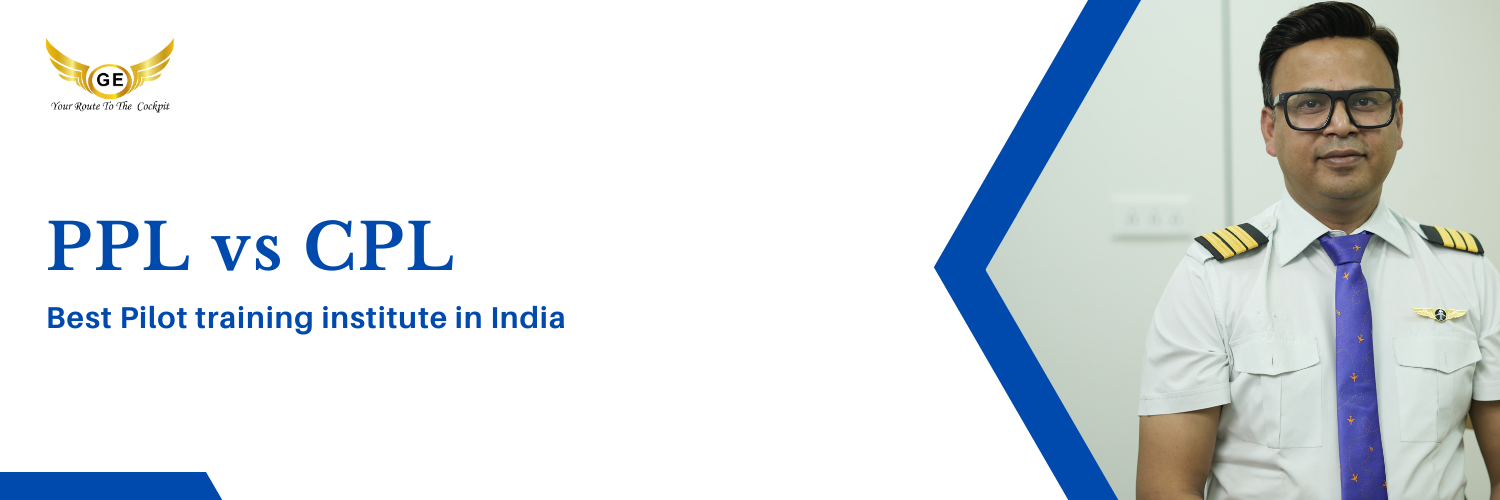
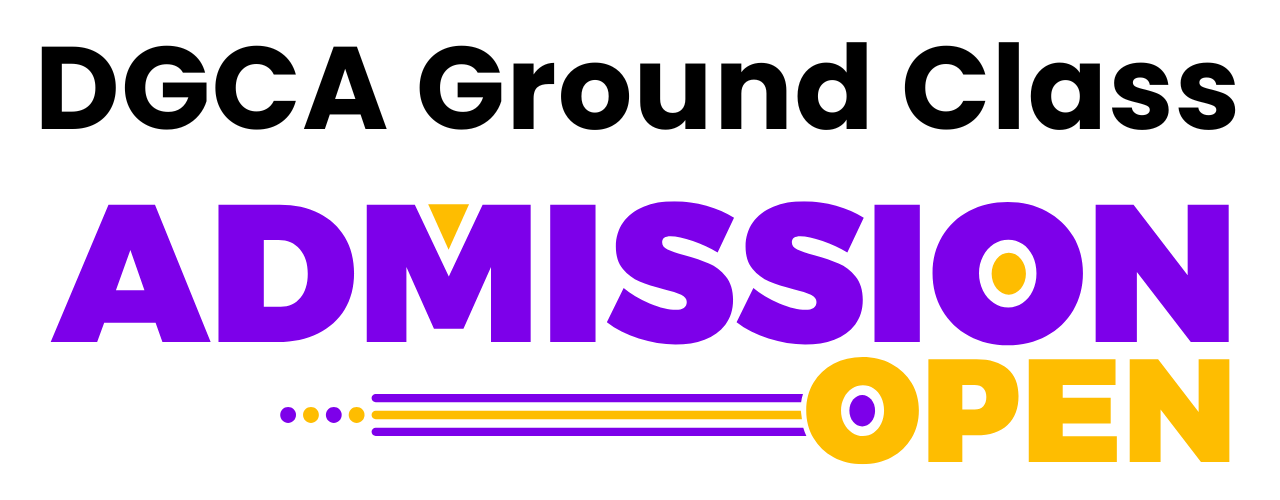
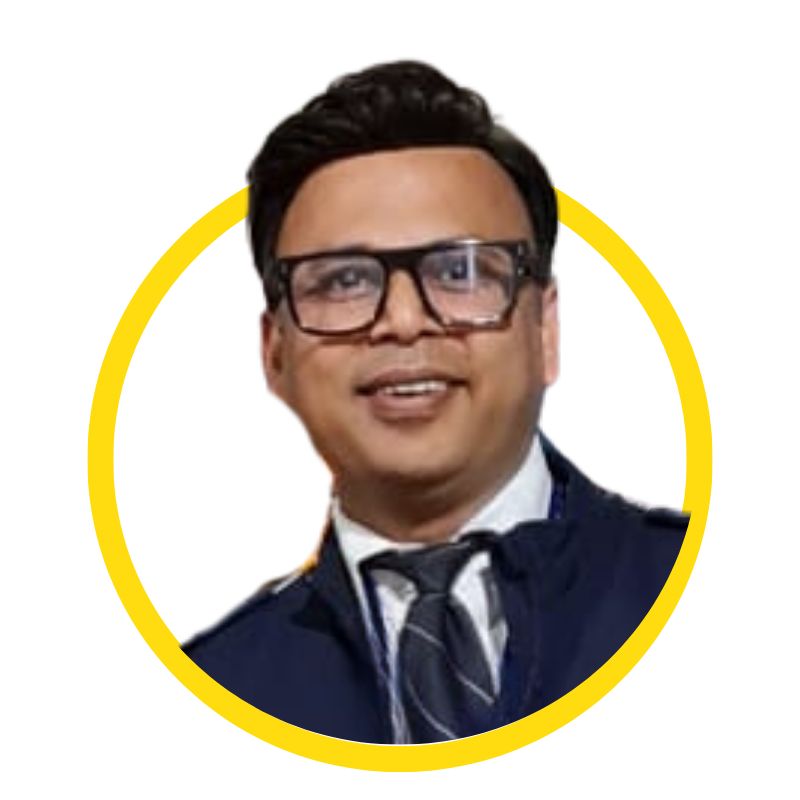
_1741586841.png)
_1756713356.png)
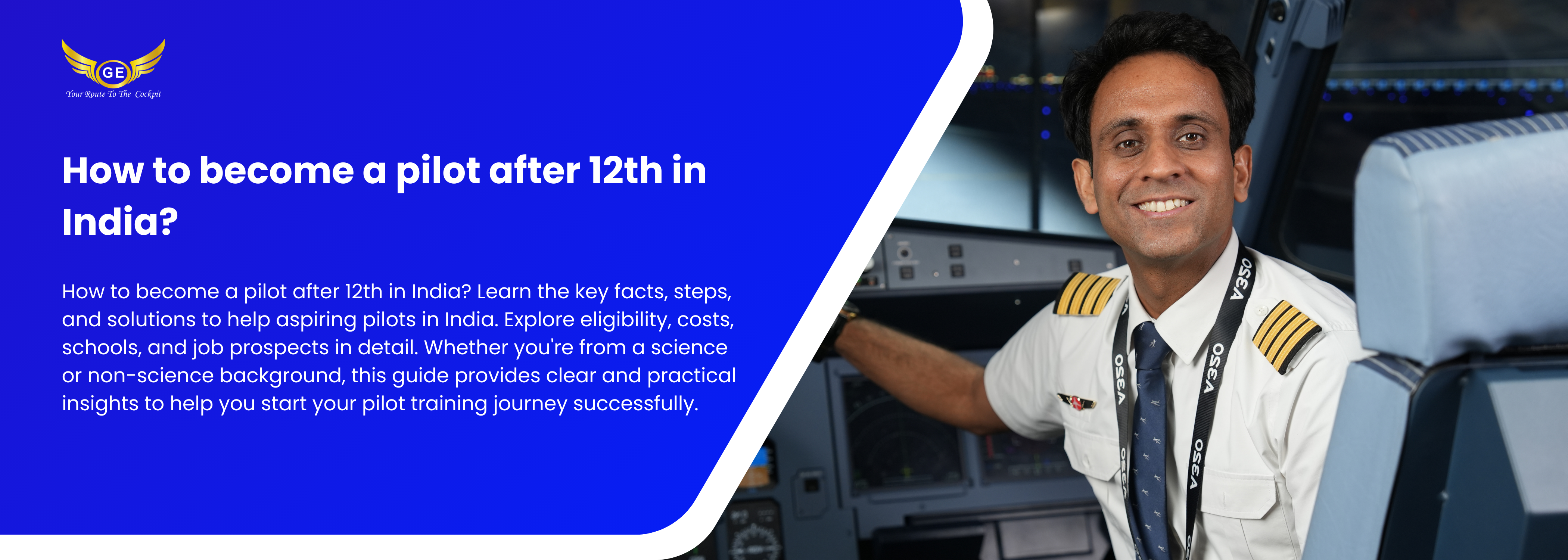


_1737526253.png)
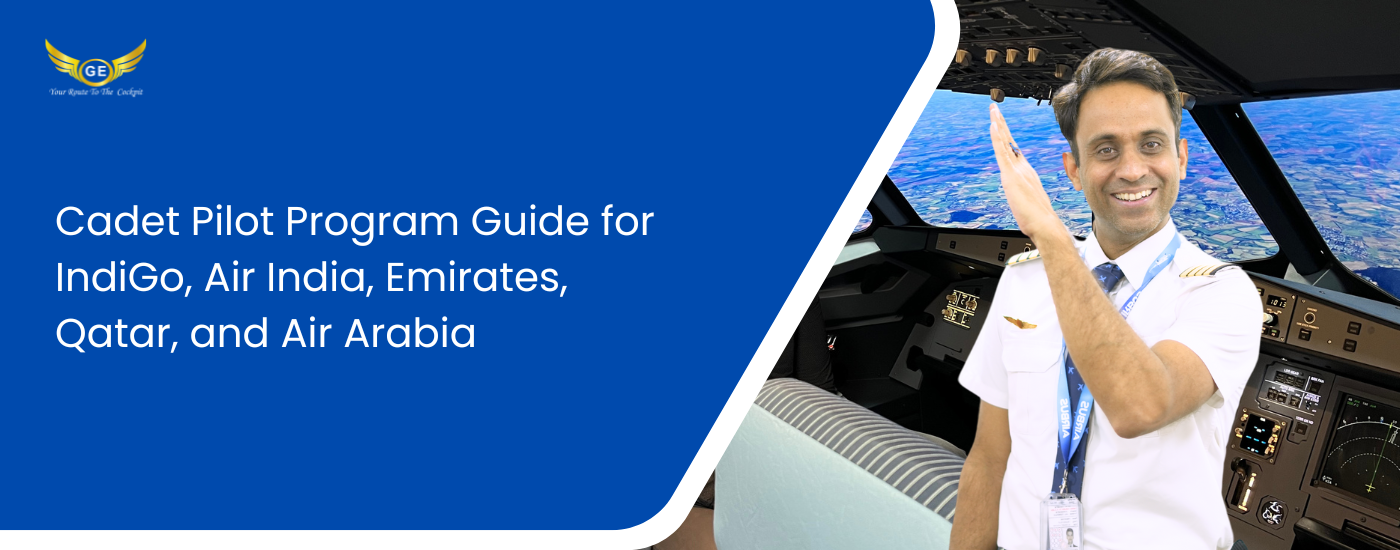
_1738998097.png)
-1756533163.png)
-1736163620.png)
